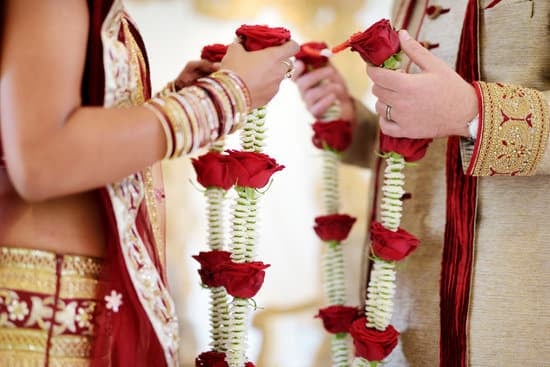What is a wishing well wedding? The tradition of a wishing well in weddings has been around for centuries, with deep-rooted symbolism and cultural significance. In this article, we will explore the history, meaning, and various aspects of wishing well weddings, from the origins of the tradition to modern interpretations and DIY ideas. Understanding the concept of a wishing well wedding can add depth and meaning to your special day.
The tradition of including a wishing well in weddings dates back to ancient European cultures, where wells were believed to be sources of good luck and blessings. Over time, the practice evolved into a symbolic gesture of hope for the future and a way for guests to offer their well wishes and blessings to the newlyweds. Today, wishing well weddings have become a popular custom in many different cultures and traditions, each with its own unique variations and interpretations.
At its core, a wishing well in a wedding holds deep emotional and sentimental value. It serves as a physical representation of love, hope, and support from friends and family as couples embark on their journey together.
The act of making a wish or offering a gift at the wishing well symbolizes the collective goodwill and positive energy surrounding the couple’s union. As we delve into this article, we will uncover the rich history, meaning, etiquette, and creative ideas related to wishing well weddings that can enhance your celebration.
History of Wishing Well Weddings
Wishing well weddings have become a popular tradition in many cultures, but their origins can be traced back to ancient European customs. The concept of a wishing well wedding is rooted in the belief that wells were sources of life-giving water and were often considered sacred.
In early European societies, it was common for people to drop coins into wells as a way to make a wish or offer a token of good luck. Over time, this practice evolved into a symbolic gesture at weddings, where guests would place their wishes for the newlyweds into a well.
The history of wishing well weddings is deeply intertwined with cultural and historical references. In some regions of Europe, it was believed that the spirits or deities residing within the well could grant the wishes of those who made offerings.
This belief led to the tradition of incorporating wells into wedding ceremonies as a means of bestowing blessings upon the couple. The act of tossing coins or making wishes at the well was not only seen as an offering to bring good fortune to the newlyweds but also as a way for guests to express their hopes and dreams for the couple’s future together.
As time passed, the tradition of wishing well weddings spread to various parts of the world and has taken on new meanings across different cultures. While some see it as a way to bless the couple with prosperity and happiness, others view it as an opportunity for guests to convey their love and support through tangible tokens.
Despite its evolution, one thing remains consistent – the symbolism behind wishing well weddings continues to hold deep meaning for couples embarking on their journey into marriage.
The Meaning and Significance of Wishing Well Weddings
A wishing well wedding holds a special significance in the context of a couple’s marriage celebration. The tradition of a wishing well at weddings dates back to ancient European folklore, where it was believed that wishes made at wells would be granted by the gods.
This concept has been adapted into modern wedding ceremonies, where guests can make monetary contributions or write down their well wishes for the newlyweds. The symbolism of a wishing well in weddings lies in the idea of providing good luck and blessings to the couple as they begin their journey together.
In addition to its historical origins, the significance of a wishing well in weddings is rooted in the emotional and sentimental value it holds for couples. The act of making a wish or offering a small token of goodwill symbolizes the support and love that friends and family have for the couple. It also represents unity and communal blessing, as all the guests come together to contribute their wishes for the happiness and prosperity of the newly married pair.
Culturally, wishing wells are seen as a means of bestowing good fortune upon others. In some traditions, coins or other items thrown into a wishing well are believed to bring luck and fulfill desires.
Therefore, incorporating this custom into a wedding ceremony not only adds an element of charm and tradition but also reflects the collective hopes and dreams of those present for the couple’s big day. Overall, a wishing well wedding serves as a beautiful representation of love, hope, and shared blessings within a community.
| Wishing Well Wedding | Meaning |
|---|---|
| Historical origins | Ancient European folklore beliefs |
| Symbolism | Good luck, blessings, unity, communal blessing |
| Sentimental Value | The emotional value for couples & families from friends & family. |
Types of Wishing Well Weddings
Traditional Wishing Well
The traditional wishing well wedding involves the presence of an actual well, often adorned with flowers and decorations, where guests can physically deposit their well wishes for the couple. This type of wishing well is a common sight at outdoor or rustic-themed weddings, adding a charming and whimsical touch to the celebration.
The act of throwing coins or notes into the well symbolizes good luck and prosperity for the newlyweds, making it a meaningful tradition that has stood the test of time.
Virtual Wishing Well
In today’s digital age, many couples are opting for a virtual wishing well as a modern take on this wedding tradition. Through websites or dedicated apps, guests can send their well wishes and monetary gifts electronically, eliminating the need for a physical well at the wedding venue. This allows for greater convenience and accessibility for guests who may not be able to attend in person, while still capturing the essence of sharing good fortune with the couple.
Themed Wishing Well
Another popular variation is the themed wishing well, where couples personalize the concept to align with their wedding theme or personal interests. For example, beach-themed weddings may feature a “message in a bottle” wishing well for guests to place their notes, while nature-inspired weddings could have a tree stump hollowed out as a unique container.
Themed wishing wells add an element of creativity and cohesiveness to the overall wedding design, while giving guests an interactive way to contribute their blessings.
As wishing wells continue to hold significance in weddings globally, these different types cater to various preferences and styles, ensuring that every couple can embrace this timeless tradition in a way that resonates with them personally.
Wishing Well Wedding Etiquette
When attending a wishing well wedding, it’s important for guests to understand the proper etiquette surrounding this tradition. Here are some guidelines and tips for guests on how to participate in a wishing well wedding:
1. Monetary Gifts: In a wishing well wedding, guests are typically expected to give monetary gifts that are placed inside the wishing well. It is a symbolic gesture of good luck and well wishes for the couple’s future. When giving a monetary gift, it’s customary to place it in an envelope and discreetly slip it into the designated wishing well during the wedding reception.
2. Gift Registry: Contrary to traditional wedding gift-giving, where guests purchase items from a registry, in a wishing well wedding, the focus is on giving money instead of physical gifts. However, some couples may still have a small gift registry for those who prefer to give a tangible present.
3. Wishing Well Decorum: When approaching the wishing well at a wedding reception, guests should be mindful of other attendees and wait their turn to make their contribution. It is also courteous to do so quietly and without drawing unnecessary attention to oneself.
4. Proper Amount: There is no set amount when it comes to giving a monetary gift at a wishing well wedding. Guests should feel comfortable contributing an amount that fits within their means and reflects their relationship with the couple.
By following these etiquette guidelines, guests can participate respectfully in a wishing well wedding and contribute to the joyous occasion in a meaningful way.
DIY Wishing Well Ideas
If you’re looking for a creative and unique addition to your wedding, a wishing well can be the perfect DIY project. Here are some DIY wishing well ideas that you can consider for your special day:
1. Wooden Wishing Well: Constructing a wooden wishing well can add a rustic and charming touch to your wedding décor. You can build it using reclaimed wood or purchase pre-cut pieces from a hardware store. Add some decorative accents such as faux flowers, ribbons, or fairy lights to enhance its visual appeal.
2. Vintage Suitcase Wishing Well: If you’re going for a vintage or travel-themed wedding, repurposing an old suitcase as a wishing well can be an excellent idea. You can add personal touches by customizing it with your initials, travel stickers, or vintage postcards.
3. Garden Wishing Well: For outdoor weddings, a garden-inspired wishing well can be fitting. Use materials like terra cotta pots, wooden barrels, and greenery to create a whimsical garden wishing well that blends seamlessly with your natural surroundings.
Remember that these DIY wishing well ideas allow you to personalize this wedding tradition and make it uniquely yours. Whether you’re aiming for a romantic and elegant vibe or a fun and whimsical atmosphere, there are countless ways to incorporate a DIY wishing well into your special day.
By adding your personal touch to the creation of the wishing well, you not only create a beautiful centerpiece for your wedding but also evoke sentimental value that will leave lasting memories for both you and your guests.
Wishing Well Wedding Alternatives
When it comes to wedding traditions, the concept of a wishing well wedding may not resonate with every couple. However, there are numerous alternatives that couples can consider if they want to incorporate the sentiment of well wishes and blessings from their guests into their special day.
One popular alternative to a traditional wishing well is the “wishing tree.” This custom involves guests writing their well wishes on small pieces of paper and hanging them on a decorative tree or branch. The visual display of all the heartfelt messages creates a stunning and meaningful focal point at the wedding reception. Some couples even choose to plant the tree in their backyard as a lasting reminder of their wedding day.
Another unique alternative is a “message in a bottle” station. Guests can write their wishes, advice, or sentiments on paper and place them inside individual glass bottles. The bottles can then be displayed on a table or shelf as part of the wedding decor. This creative twist on the traditional wishing well adds an element of whimsy and allows guests to express themselves in a fun, imaginative way.
For couples who want to incorporate charitable giving into their wedding, a donation box or charity registry can serve as an alternative to a traditional wishing well. Guests can make contributions to a cause that holds meaning for the couple, aligning the gift-giving tradition with philanthropy and social responsibility. This option not only spreads love and goodwill but also makes a positive impact beyond the wedding celebration.
Overall, there are countless ways for couples to embrace the sentiment of best wishes from their guests without adhering to the conventional concept of a wishing well wedding. By exploring alternative ideas that align with their personal values and preferences, couples can create a unique and meaningful experience for themselves and their loved ones.
How to Plan a Wishing Well Wedding
In conclusion, a wishing well wedding is a beautiful way for couples to incorporate tradition, symbolism, and sentimentality into their special day. The origins of wishing well weddings date back to ancient European customs where the act of tossing coins into a well was believed to bring good luck. Over time, this practice evolved into the modern concept of guests contributing cards with monetary gifts in a decorative well or container at the wedding venue.
The significance of a wishing well in the context of weddings lies in its representation of abundance, prosperity, and best wishes for the couple’s future together. It also serves as a heartfelt way for guests to contribute to the newlyweds’ life journey as they embark on their marriage. From cultural and historical references to emotional and sentimental value, a wishing well adds a meaningful touch to any wedding ceremony.
For couples planning a wishing well wedding, it’s essential to consider logistics, etiquette, and creativity when incorporating this tradition into their celebration. By understanding the history and meaning behind wishing well weddings, along with exploring various DIY ideas and alternatives, couples can personalize their wedding day while honoring this timeless custom. With proper planning and guidance from experienced professionals in the wedding industry, couples can execute a memorable and heartwarming wishing well wedding that reflects their unique love story.
Frequently Asked Questions
How Does a Wishing Well at a Wedding Work?
A wishing well at a wedding typically works by providing a place for guests to leave cards, notes, or small gifts for the newlyweds. It is often used as an alternative to a traditional gift registry and serves as a way for guests to offer their well wishes and blessings to the couple in a tangible form.
What Is the Purpose of Wishing Well?
The purpose of a wishing well at a wedding is to allow guests to contribute tokens of good luck, love, and support to the newly married couple. It also provides a convenient way for guests to give monetary gifts or small items that may not be on the couple’s formal gift registry.
What Is the Meaning of the Wishing Well?
The meaning of the wishing well in the context of a wedding symbolizes hope, good fortune, and positive intentions for the future of the couple’s marriage. It represents the collective goodwill and blessings of friends and family as they offer their heartfelt wishes for love and happiness in the years ahead.

I have been involved in marriages for over 20 years helping couples and singles understand more about them.





